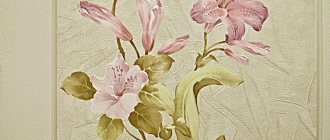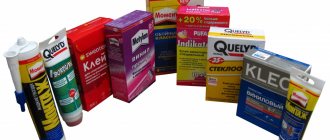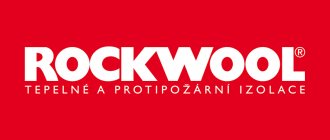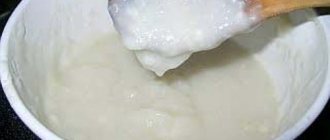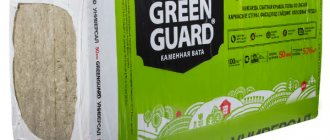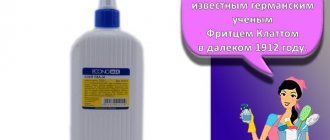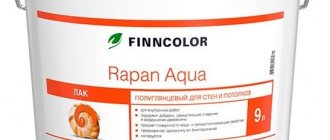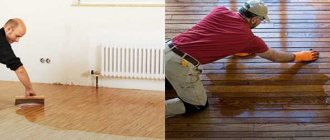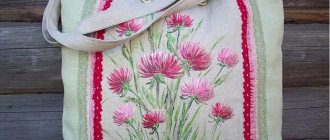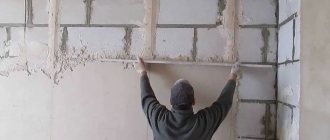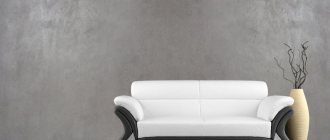In modern interiors, more and more preference is given to natural materials. When decorating walls, designers often use cork wallpaper. This natural material, unique in its qualities, has the ability to create a cozy and comfortable atmosphere not only in the home, but also in office spaces. Cork goes well with stone and wood finishes and is suitable for creating a wide variety of styles - from rough country to exotic Japanese and Mediterranean interiors.
Let's consider the pros and cons of using cork wallpaper, as well as all types of products for decorating walls made of this material.
Advantages of coverage
The pattern of the cork surface is distinguished by its originality and decorativeness. This is an environmentally friendly raw material that does not rot and does not absorb odors. The material has increased noise insulation parameters, reaching 0.85 at a frequency of 2.5 kHz. For example, for similar products the indicator does not exceed 0.7. The coating helps reduce low noise and light vibrations.
At the same time, cork is an option for thermal insulation, as it has reduced thermal conductivity. For example, 3 cm thick cork sheathing maintains heat at the same level as 10 cm of pine or 20 cm of concrete.
The resulting surface does not accumulate dust, does not become electrified, and does not burn when treated with fire retardants. If the top coating is treated with varnish, it can be washed without harm to the products.
The low-maintenance cork is durable, elastic, and wear-resistant. The coating is very elastic; after loading, the material gradually returns to its normal shape. But after prolonged exposure, for example from furniture, the cladding becomes irrevocably deformed.
More interesting information on cork raw materials in the following video:
Decor options
Cork products in rolls can be used to cover walls in any room. Most often they are used to design:
- Children's rooms. They are in high demand due to their freshness, naturalness, and high soundproofing characteristics. The baby will not be disturbed by extraneous sounds coming from outside. Sleep will become restful, and awakening will be easy and pleasant. Mistakes should not be made when choosing canvases. Particular attention should be paid to the hypoallergenicity of the material used for manufacturing. It is necessary to ensure that the fidget does not tear off pieces from the products.
- Kitchens. When choosing this type of cladding, you should take care of purchasing kitchen sets with natural patterns. It is advisable to choose a natural color. The ideal style is classic. Experts advise additionally covering the surface with a special compound that prevents the wallpaper from absorbing foreign odors.
- Living room. The room should be filled with warmth and light, uplifting and positive. An ideal place for receiving guests, home gatherings, and playing with children.
- Study. Models with additional noise insulation functions are selected. Nothing should distract from important matters. Silence will give you the opportunity to focus on the main thing and not miss important nuances.
- Bedroom. Covering such a room with cork wallpaper is considered the best option among all those available for sale. Ecological cleanliness and soundproofing properties will help give the bedroom coziness, give you the opportunity to sleep peacefully and start a new day in a good mood.
- Hallway. An ideal option, as they firmly resist the absorption of dirt and dust.
- Balcony (loggia). A distinctive feature of the product is its resistance to bright sunlight and high humidity. Does not allow sounds from the street to penetrate inside the room. A variety of colors will help you create a design in both dark and light tones. An ideal combination with wood, bamboo, reeds. Can be combined with brick, stone, plaster, other types of wallpaper, and wood panels. Pasting will not take much free time.
- Bathroom. If the tiles become boring, they can be replaced with cork sheets. In addition to comfort and warmth, the material does not absorb moisture, does not allow fungus to multiply, and mold does not form.
Various styles
Cork products belong to the universal category. They will fit into any style of room, regardless of the existing design. Where is cork wall covering most commonly found? A wide variety of styles:
- Loft. Urban style goes perfectly with or without decoration. Thanks to cork, the interior becomes softer and more comfortable. At the same time, a certain stylistic “zest” is preserved.
- Eco style. Natural elements predominate. The combination is the most varied. Untreated wood predominates. For decoration, it is advisable to choose spacious areas. Tiny rooms will look unsightly.
- Country. It will complement rustic motifs with its presence. Much attention is paid to the presence of natural materials both in the quality of finishing and in the furniture sets present. Walls can be decorated with combinations of plaster, wooden boards and cork.
- Ethnic style. Unusual elements predominate. There is a sense of mystery and delight in the room. The lighting is dim. Thematic accessories are used as decor.
- Modern style. There is no need to rant for a long time about the benefits of choice. Just look at the photos provided.
Types of cork coverings
Cork products come in several formats. Manufacturers promote maximum choice. Depending on the conditions, purpose, surface, you need to consider the detailed characteristics of each type of plug.
Liquid product
Crushed bark can be produced in the form of a finely dispersed product, which contains solvents and dyes. The principle of applying insulation is not very different from the technology of surface treatment with conventional paint.
After the applied coating dries, a single seamless fabric is formed on the walls and ceiling, which will fulfill the main purpose of the material.
Using liquid joint sealer
To distribute cork paint, a spray gun is used to uniformly spray two layers of paint. Each layer must first dry, the application thickness is 2-6 mm.
Panel blanks
With ready-made cork cuts you can quickly cover walls or other surfaces in the house. For installation, you can use glue, or take panels that are fastened using the tongue-and-groove principle.
There are two types of panel insulation, differing in composition. Products made from compressed wood chips may include up to 4% acrylic-based binder component. Another option is panels with a layer of cork veneer and a protective coating.
Wall panels
The advantage of veneer is that it is made from solid pieces of cork. Veneered material is the highest quality type of cladding, more expensive than cork analogues.
The panels are made with locks; installation can be done without fasteners or glue.
Technical cladding
The technical type noise insulation product is thin, flexible and sold in rolls. The thickness of the material can be only a few millimeters; it can be used as a layer between the base and the finishing. This is a good way to cover walls and floors.
What does rolled technical insulation look like?
If you choose decorative raw materials, coating may not be required.
Darker rolls are used as cladding, which will be covered by finishing, and light colors are used for decoration.
Soundproofing the floor
Sound insulation at the bottom of the space is hidden under the flooring, for example, panel parquet, laminate, parquet boards. They lay it under the linoleum if the cladding is hard enough.
Cork is best suited as a base for laying solid finishing raw materials; it is highly hygroscopic, absorbs sounds and partially eliminates defects of the main surface.
Before spreading the raw materials, it is necessary to completely clean the concrete, eliminate strong defects and glue soundproofing tape around the perimeter of the room. The joints of the first thin layer of polyethylene foam are taped.
The next step is to lay out a polypropylene backing or plywood, 3 cm thick, in a checkerboard pattern. It is recommended to lay out 2 layers with offset joints.
Then, a cork layer is laid so that it covers the seams of the previous coating, and new joint areas are also taped.
How to glue cork wallpaper?
Cork coating is quite capricious in gluing. You will need special expensive glue and a lot of patience.
- Perhaps the most important thing is to carefully prepare the surface. Cork wallpaper requires a very flat wall, otherwise it will bend and diverge at the joints. The walls are cleaned of old coating, paint is removed, cracks are covered and unevenness is sanded. If necessary, the surface is leveled with plaster.
- Treat the walls with a deep primer and allow them to dry thoroughly.
Advice The rolls are brought into the room, unpacked and allowed to rest for 2-3 days. This prevents shrinkage and deformation of the cork coating after gluing to the walls.
- Cut the roll into strips of the required length and lay them on a flat surface to straighten.
- Strips can be glued horizontally or vertically.
- Make markings on the walls according to level (horizontally or vertically).
- The glue for cork wallpaper is very thick; it is applied to the canvas with a spatula or comb. Some manufacturers indicate that glue must be applied to both the wallpaper and the wall.
- You need two people to glue the strips, carefully and evenly pressing them against the wall using a rubber roller. If the air bubble cannot be removed, you can pierce the wallpaper with an awl.
- Cork tiles can be glued alone. The pattern is laid out randomly - in even rows, diamonds, staggered.
- The material without a backing is handled with care, because the cork is fragile and it is easy to chip at the corners.
- The allowance at the bottom is cut with scissors without waiting for the wallpaper to dry.
- The glue that appears at the joints is not wiped off, but removed after drying with a knife.
Cork covers dry within 3 days with windows and doors closed.
Insulation of walls from noise
Raw materials are often used when working with walls, but before applying insulation it is necessary to eliminate surface imperfections. It is necessary to properly repair the resulting cracks.
Although the walls will be soundproofed, noise may partially pass through the holes for sockets and switches, since they are recessed into the wall. If there are voids around them, they are first lined with dense mineral wool, then treated with putty or cement. When the steps are completed, the socket box is put in place and the installation of the device continues.
Features of the material
Before gluing the walls, the base must be carefully primed in at least two layers to increase the level of adhesion.
An option for high-quality insulation is panels 3 cm thick. It is not profitable to use thicker types of cork products; the total cost may exceed the cost of installing a metal profile and using mineral wool. Thin types do not provide the proper level of sound insulation; their use is not justified.
Roll covering is justified when implementing combined sound insulation, as a decorative external element.
Cork wallpaper in the interior
Cork wallpaper is the thinnest option that is produced on a paper basis. A varnish is applied over the paper, on top of which a cork veneer of only 1 mm is glued.
Partial sound insulation from the thinnest cladding is observed only if a number of rules are observed. Several layers of material can be applied; multilayering involves partial noise reduction. If cork tiles are laid, it is necessary to carefully coat the joint areas to obtain a seamless coating. Each subsequent layer of sheathing must be laid offset to overlap the joints of the previous one.
Selecting the type of coating
Cork materials do not have a wide range of colors and shapes: either a roll or sheets. But the sheet format requires a choice of thickness - blanks range from 2 mm to 5 cm.
Non-veneered panels are created from light or dark agglomerate, where the first type is used in decorative finishing, and the second as a layer.
The outer side of the cork is covered with various decorative means, usually varnish. For rooms with a high level of air humidity, the cladding surface is treated with a sealant varnish. With such protection, the walls can even be washed, but there is a risk of destruction of the varnish layer. It is necessary to re-treat the walls with a sealing compound.
Flaws
Cork flooring has its drawbacks. There are not many of them.
- Wallpaper is difficult to glue; you need a perfect surface and special glue. The sheets are quite heavy compared to other types of wallpaper, so special care is required when working.
- The cork covering is firmly glued to the wall, so in the future there may be problems with preparing the surface for subsequent repairs.
Cork has a narrow range of colors. It cannot be said that its patterns are monotonous, but its natural color is in the range of natural wood - from light yellow to dark brown.
- High price. This disadvantage is somewhat compensated by its long service life.
Untreated cork coatings are vulnerable to excess moisture - they swell. For use in the bathroom and kitchen you need a special water-repellent coating.
Ceiling covering
Soundproofing the ceiling is done to reduce sounds from neighbors above. A common practice is to install a suspended ceiling, inside which an insulating layer is inserted or sprayed. But a significant drawback of the method is a partial reduction in space.
A thin cork alone will not prevent the appearance of sounds; this can only be achieved by combining sound insulation.
The multi-layer cladding design creates a good level of noise protection. The plates used for work must be at least 3 cm thick.
The principle of operation of ceiling soundproofing
Insulation is carried out only on a leveled ceiling without gypsum putty, so that there is a high level of adhesion. Then, the surface is degreased and coated with a cement-based primer or an aqueous adhesive solution.
The ceiling is divided into 4 sections, and the central point is determined. By applying and drawing the image of one tile, marking, application of glue, and installation of raw materials are carried out. The adhesive mixture is also applied to the back side of the tile to make it more secure.
Gluing technology
There is nothing difficult in working with cork products. You just need to follow certain rules for working with it. They are as follows:
- Preliminary surface preparation. The walls are cleaned of old finishes, leveled and well primed.
- A vertical line is drawn using a plumb line or level. It will serve as a ruler for even installation of the canvases. The line mark is in the middle of the wall and coincides with the width of the canvas.
- The material is being prepared. The wallpaper is cut to the required length. Afterwards they are laid out on a clean floor for some time to level.
- A part of the wall equal to the width of the canvas is covered with glue.
- The strip of wallpaper presses well to the surface.
- The canvases are glued end to end.
- If glue gets on the cork surface, give it time to dry, and then carefully remove it.
Caring for applied insulation
No special care required. It is enough to periodically wipe the dust with a dry cloth or varnish and wash. For processing, use only polyurethane and acrylic-based varnishes.
If gaps appear between the sheets, they must be properly sealed. First, a piece of cork is glued inside, the edges and edges of the piece are coated with glue. It is recommended to paint the outside with a protective agent immediately after drying.
It better protects the coating from the effects of oil-wax, which you can purchase and apply yourself.
Rating of high-quality cork wallpaper up to 30,000 rubles
York Candice Olson Modern Nature, art CX1202
This popular model, from a time-tested American brand, is in deserved demand largely due to its natural colors. Based on the description indicated by the brand, the sheets do not need to be joined, since the pattern is as natural as possible. Roll size: 91x732 cm. Special glue is required for installation.
You can purchase a roll at a price of 27,790 rubles.
York Candice Olson Modern Nature, art CX1202
Advantages:
- safe composition;
- no need for docking;
- ease of installation;
- natural color.
Flaws:
- high price.
Ronald Redding Organic Cork Prints art LC7121
This product from a time-tested American brand is characterized by the presence of an unusual and stylish design on a classic background. The design pitch declared by the brand is 52 cm, which should be taken into account when choosing a model. Roll size: 68x820 cm. The composition does not contain harmful additives or chemically hazardous preservatives.
The average price of a new product is 19,140 rubles.
Ronald Redding Organic Cork Prints art LC7121
Advantages:
- stylish appearance;
- large roll;
- ease of subsequent installation;
- classic background.
Flaws:
- high price.
Carl Robinson Carl Robinson, art CB12209
This product is produced by a British brand specializing in the manufacture of high-quality products and various building materials. It is characterized by the presence of a safe composition and stylish appearance. An excellent solution not only for the bedroom, but also for other rooms. To avoid mistakes when choosing, you should take into account the existing pattern pitch of 64 cm. Declared roll size: 90x100 m.
Cost – 8811 rub.
Carl Robinson Carl Robinson, art CB12209
Advantages:
- safety;
- ease of installation;
- stylish design;
- water resistance;
- wear resistance;
- increased service life.
Flaws:
- small rolls.
Cork selection
Products are selected not by manufacturer, but by country of origin. Chinese products are not recommended due to fragility and poor quality manufacturing.
Good cork is produced in Portugal. For example, or Ibercork, which creates technical, floor, and wall materials.
If you need to find the most decorative types, the Corksibas brand is suitable, and it is recommended to consider multi-layer products for a floating floor from. Although the latter stand out on the market with high prices.
Panels with locks for installation are more expensive than those that need to be glued.
Technical cork in rolls
Cork coverings perform not only a decorative function. The choice of application area is influenced by the thickness of the sheet.
Technical rolled cork of 2-4 mm is needed for heat and sound insulation of walls and floors. Cork thickness from 6 to 10 mm is suitable for use as a substrate when laying laminate, carpet or linoleum.
Rolled cork with a layer thickness of 10 to 100 mm is suitable as a shock absorber of various vibrations, insulation and soundproofing material. This type of coating is called cork agglomerate.
Wooden wall panels. Read about it here. And here is an article about mirror mosaics.
See our website. And you will learn a lot more informative, useful information.
>
Properties, functions and characteristics of cork substrate
Cork backing for walls under wallpaper is produced by pressing pre-crushed cork oak bark. The gluing of the granules is carried out thanks to the natural substance suberin, which resembles wax.
Cork material consists of many hollow cells. Their peculiarity is the composition of the walls, characterized by a five-layer structure:
- Fiber, occupying two layers. Each of them is “attached” to air located in the cells.
- Two waterproof layers, the effectiveness of which is achieved due to their dense and oily structure.
- A woody layer that gives the cells the necessary rigidity.
Technical cork is available in three forms:
- Leafy. The thickness can vary from 0.4 to 1 cm. The length is 0.915 m and the width is 0.61 m.
- Rolled. The thickness ranges from 0.2 to 0.4 cm. The standard length is 10 m, but 25-meter samples can also be found. The width is 1 m.
- Cork panels.
There is one type of cork covering – cork agglomerate. It has a slightly lower density, but is also successfully used as a lining for wallpaper.
Functions of cork backing
- leveling the wall base;
- increasing the thermal insulation characteristics of the room;
- soundproofing the space;
- preventing condensation formation;
- increasing adhesion between cork and wallpaper.
Specifications
| Index | Unit | Indicator value |
| Density | kg/m3 | 220-250 |
| Thermal conductivity | W/m∙k | 0,042 |
| Sound absorption coefficient | 0,85 | |
| Sonic boom resistance | dB | 12 |
| Humidity (natural) | % | 7 |
| Water absorption capacity (by volume) | 0,01 | |
| Tensile strength | kg/cm2 | 2 |
| Ability to shrink and restore shape under a load of 7 kg/cm2 | % | initial value – 10; residual (with hourly exposure) – 0.7 |
| Deformation modulus of elasticity | kg/cm2 | 2000-2500 |
| Chemical resistance | inert material |
Like any wood product, cork backing for wallpaper tends to have high flammability, however, in most cases, the production stage includes fire-resistant processing of the workpieces, which makes them completely non-flammable (flammability class B1).
Benefits of cork backing
Cork backing for wallpaper is durable. The service life is calculated not just in decades, but in centuries. And throughout its entire operational life, it does not tend to “grow old.”
You can re-paste the wallpaper countless times. This will not affect the technical characteristics of the plug in any way.
Technical cork is extremely wear-resistant. It tolerates mechanical stress well, which is facilitated by sufficient elasticity. At the same time, the linear dimensions of the substrate remain unchanged even after prolonged exposure.
Inert to temperature fluctuations - even heated material is not subject to stretching. Extraordinary strength and density allows it to maintain its original shape and not shrink.
Gluing a cork backing to the wall under the wallpaper ensures the leveling of the base. Therefore, the puttying step can be safely excluded if we are talking about minor surface imperfections.
The agglomerate, like the technical variety of cork, is antistatic - it does not conduct current, and also does not accumulate electrical charges in the thickness. In addition, the substrate can protect the room from radiation.
Resistance to mold formation and antiseptic properties are due to the presence of suberin - released when the fabric is heated, it serves not only as an adhesive, but also as a disinfectant that can destroy bacteria.
In addition, cork backing for walls, despite the 100% content of tree bark, is practically not susceptible to pests and rodents. Protection is achieved through special sanitization carried out at the production stage.
Environmental friendliness is another undeniable advantage. Cork is an exclusively natural material that does not contain synthetic impurities.
The production process eliminates the use of harmful compounds, which makes the substrate absolutely safe and hypoallergenic.
It is immediately worth emphasizing that the cork is not capable of spreading flame - it is non-flammable. It only tends to smolder, without releasing toxic phenolic or formaldehyde substances.
And, of course, the main advantage of a cork backing is effective sound insulation. The advantage is due to the porous structure of the material, filled with air layers, which allows not only to absorb noise, but also to retain heat in the room.
